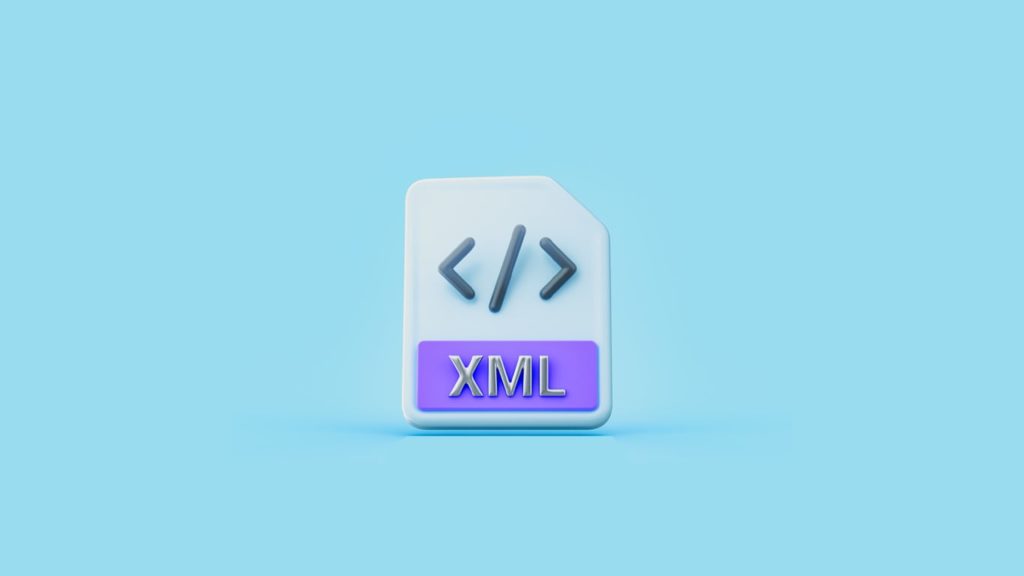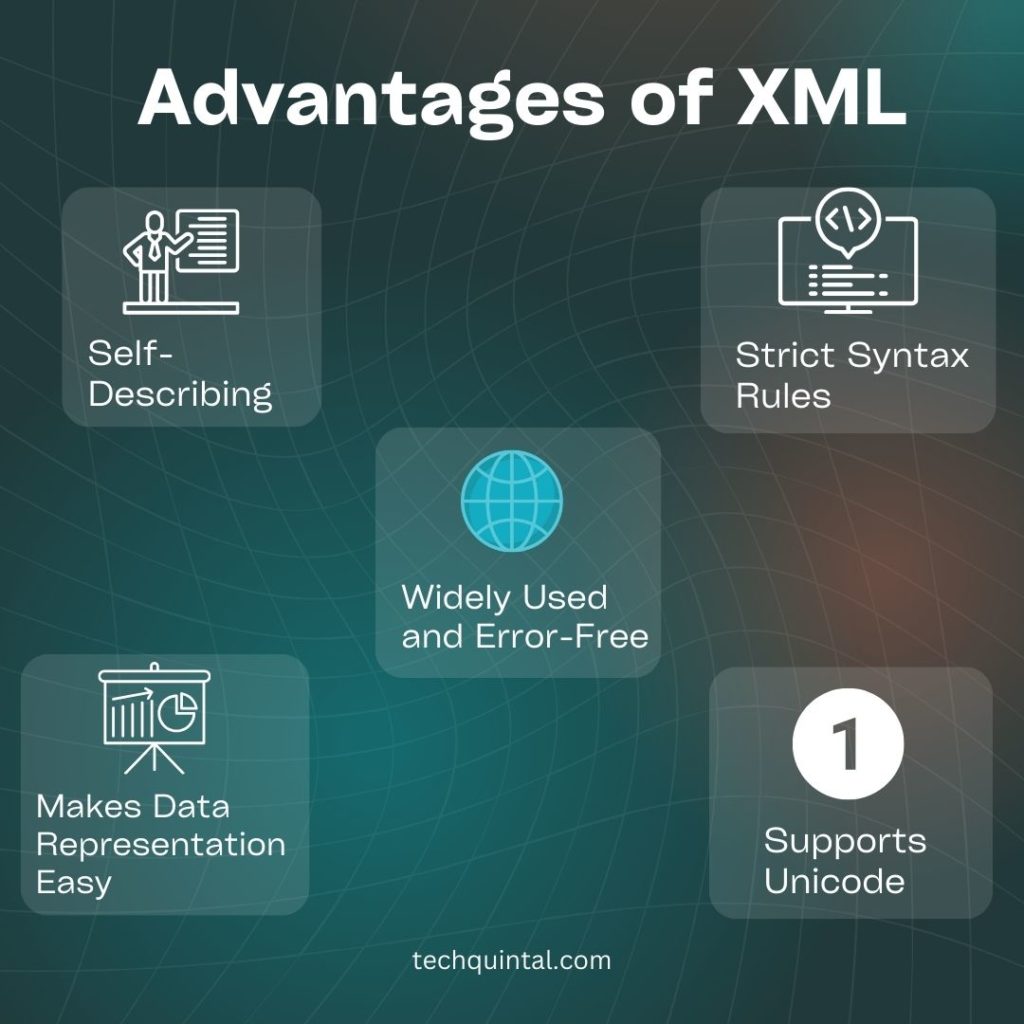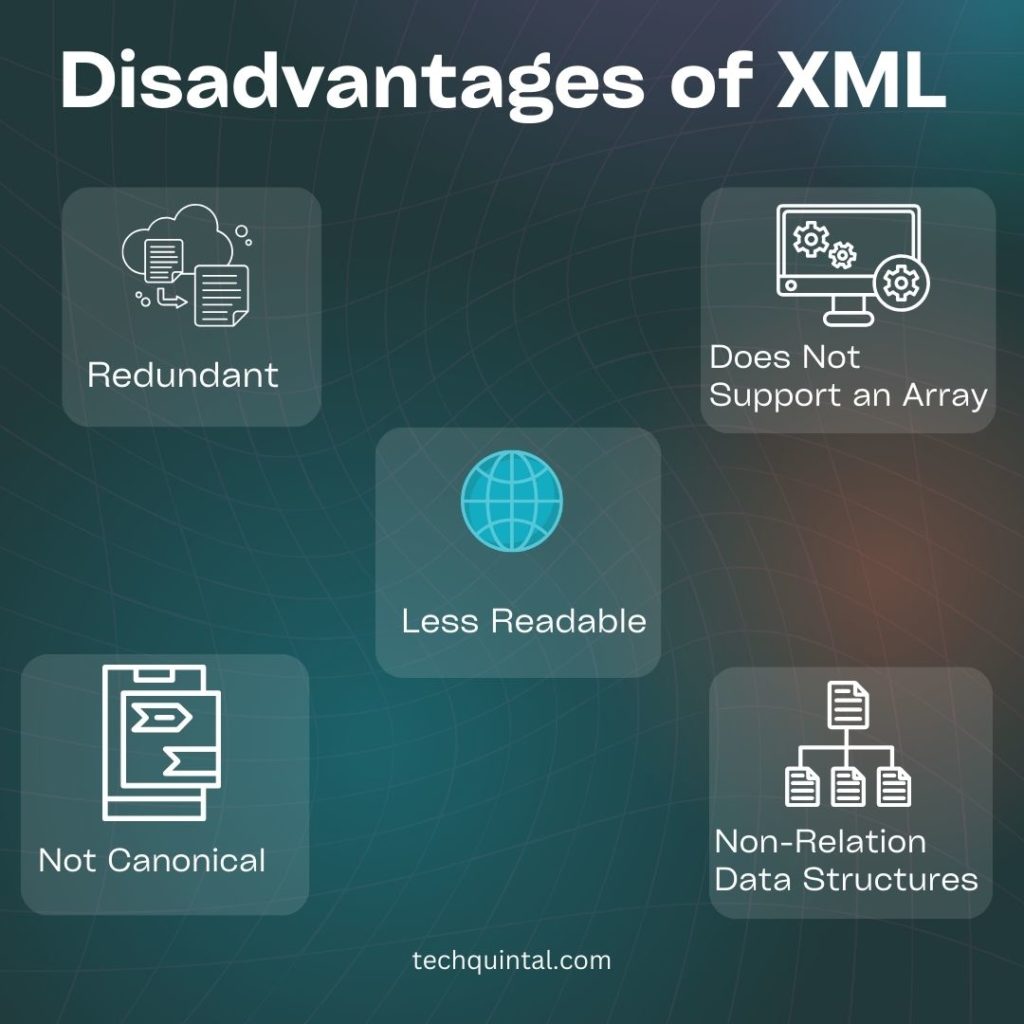
XML (Extensible Markup Language) is a text-based meta or markup language, which represents a format to show information structurally, but has pros and cons. That information can be transactions, invoices, configurations, books, documents, and so much more. The language stems from the ISO 8879 SGML format made applicable for Web use. Today, it is in wide application next to HTML (HyperText Markup Language), as they have plenty of similarities.
However, there are crucial distinctions, so you cannot start using it if you only know HTML. Luckily, the advantages and disadvantages of XML will convince you to learn its syntax rules and avoid format conversion.
What is XML?
It is not easy to learn the advantages and disadvantages of XML without understanding what it really is. People have more than one definition in mind for XML, but let us have a look at the most concise one.
XML stands for Extensible Markup Language. It is one of the most flexible ways of creating common information formats and sharing them on the World Wide Web, intranets, or other places.
If you want to compare it with another markup language, you can put it beside HTML. It looks similar to HTML in its use of angled brackets and tags. Both HTML and XML focus on the data, but HTML focuses on how data should look and XML focuses on what the data really is. You can consider XML a self-descriptive language. While writing this language, we put the data into the tags, and the tags provide information about the data enclosed in them.
One of the major advantages of XML is its platform independence. It can make data available to different kinds of applications. It is a text-based language and both humans and machines can read it. Developers widely use it in web services as well.
Top Advantages of XML
Let’s begin with the positives of using Extensible Markup Language. Here are several upsides of XML:

1. XML is self-describing
Elements and attributes in this text-based format are often self-explanatory. Therefore, even people who have never studied it can find and find minor mistakes in code such as closing the XML tag, e.g., <root><root> into <root></root>.
Though more flexible than HTML, tags are also case-sensitive, so elements inside, such as <address> and <Address> aren’t the same tag. Also, it is relatively readable for humans, not only machines.
2. It is widely used and documented
XML has a wide array of applications nowadays. It not only works on the Web for transferring data over a network, but also locally and between programs, people, computers and people, and so on. It’s also the foundation of many standards and formats. For instance, word processor formats such as OOXML and ODF are based on it, as well as the increasingly popular SVG graphics format.
Standards such as Universal Plug and Play (UPnP) and UBL or Universal Business Language also utilize XML. You’ll also find it in communication services such as XMLRPC, and other databases and languages.
The popularity makes tutorials and courses easy to find, and a specification for the language is roughly 30 pages (and growing) and readily available. In summary, XML is independent of a programming language or platform, offline or online.
3. It is verbose and has strict syntax rules
XML is verbose, meaning that you must provide every tag in the text and “close” it, such as <description>some text</description>. If closing isn’t the goal, you must mark the element as empty if you want to avoid producing an error. You can close it as usual or use a short form such as <description />.
Moreover, Instead of exclusively in special cases, if it contains a character not allowed in the name or a space, XML requires you to put quotes on any attribute value. Therefore, you would enter <description type="long" />
4. The format can be read by any XML parser
Any XML tool or parser can read and process any XML document. That’s what gives it versatility. That doesn’t mean there aren’t tools that require unique markup, but they can all parse base language. Therefore, you don’t need to limit yourself to specific software, or even worse, buy a software license to start.
5. XML supports Unicode and hexadecimal numbers
Like HTML, XML supports the international encoding Unicode character format, boosting its application for transferring any information structured in a human language. Plus, besides numeric and decimal values that represent letters, digits, or symbols, it also supports hexadecimal references.
6. It makes changing data and its representation easy
One crucial feature of XML is that code changes don’t directly affect data representation, letting you tweak things at any point. To clarify, you can change XML and after solving any errors, the data from XML is read and displayed by other languages (HTML, for instance) in the Graphical User Interface (GUI).
Consequently, you can make tweaks in XML, and they will carry over to another language without any updates in the GUI for that language.
7. XML must remain error-free
XML will display any syntax errors it finds, and you cannot use the language until you solve them. To do so, XML permits validation via Schema and DTD (Document Type Definition). There are a variety of results these validations show at the end.
For instance, if it has correct syntax, such an XML document is titled “Well Formed”. If used against DTD for validation, and it passes, it is both called “Valid” and “Well Formed”.
Top Disadvantages of XML
No programming or markup language is ideal, regardless of how popular and beneficial it seems. Therefore, here are some downsides of XML:

1. XML is verbose but redundant and potentially large
While being very verbose can be a huge advantage for beginners, hence we put it there, it can also be a huge drawback of XML. It is redundant, i.e., has a lot of “unnecessary” mandatory syntax rules that increase the document size.
Therefore, whenever data volume is enormous, it leads to an increase in data transportation, processing, and storage expenditure. Those may be negligible when it comes to personal use, but add up in large systems.
Even worse, there are new formats that can achieve the same while using fewer data. As an example, that’s one of the pros of JSON. In short, binary representation, especially tabular one, is superior to XML’s.
2. It’s less readable compared to some formats
This fact is relative since it’s hard to define what “readable” is. However, other markup languages and text-based formats for data transfer are improving human and machine readability as time goes on, and JSON is an example yet again. It also has troubles with namespaces, since they are difficult to use and require extra work to implement while other languages do it efficiently.
3. It doesn’t support an array
XML does not allow the use of an array while JSON and other markup languages do. That’s one of its biggest flaws and time-wasters for some programmers. To get an array, you would have to convert XML to other formats.
For instance, a PHP function file_get_contents () can be utilized to read a file as a string and potentially convert an XML file into a PHP array. Sometimes you need to convert the file to Simple XML (element-only version), then use a simplexml_load_string() function to parse XML data.
4. XML promotes non-relational data structures and isn’t canonical
XML is not canonical, meaning it fails to generate a physical representation of an XML document, i.e., its canonical form. We already went over this—the form will remain identical, byte-for-byte, regardless of the alterations users make to XML. That isn’t always a benefit.
Additionally, it encourages data non-normalized structures. In other words, it doesn’t assist with tabular data presentations in rows and columns popular in modern databases.
Common Uses of XML
We often get confused when it comes to naming technical things. But let us try to end this confusion with the XML by having a look at some of its most common uses:
- Data Storage and Transport: XML is most commonly used for providing a format to encode data in a way that can be readable by both humans and machines. We also use XML to transport data on the web.
- Web Services: We cannot move further by not mentioning the web services provided by XML. XML is used for WSDL, which stands for Web Services Description Language. It defines web service interfaces. It also allows programs to communicate over the Internet.
- Configuration Files: If you are aware of XML, then you must be aware of the number of applications that use XML files for configuration. The XML configuration files are easy to read and edit. One of their benefits is how they allow developers and users to set parameters for applications’ functionality.